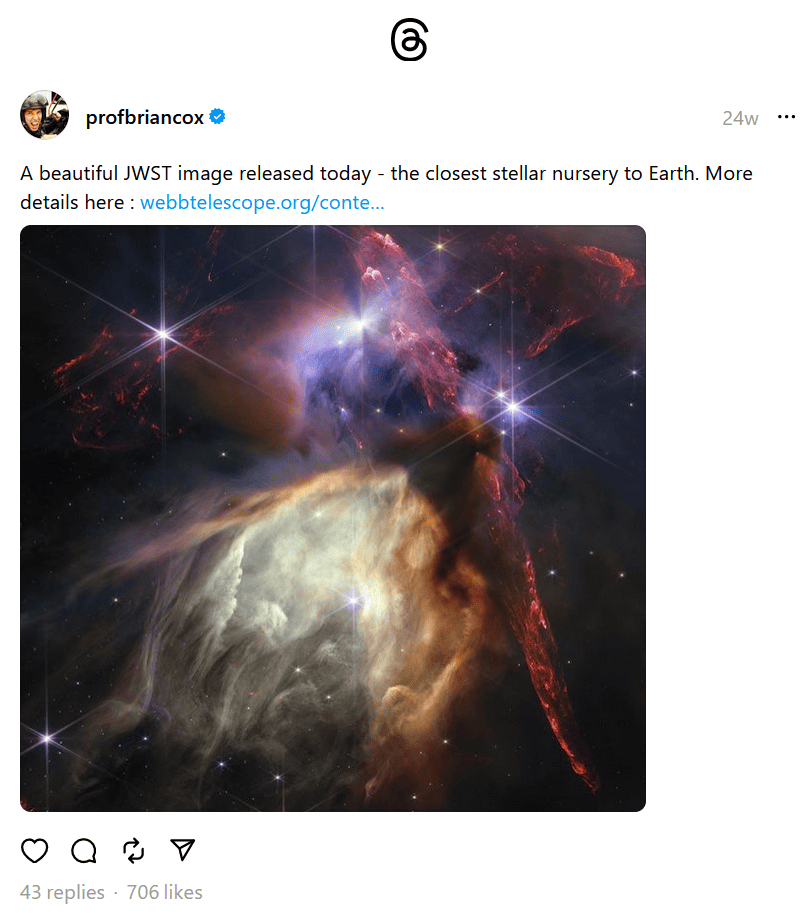The recent exodus of scientists from Twitter (err … X) following Elon Musk’s acquisition has left a palpable void in the digital landscape of science communication.
Twitter, once a bustling hub for researchers to share insights, debate, and engage with the public, is now a shadow of its former self for the scientific community.
The question now is: where is the best social network for scientists to go to rebuild their networks and continue their vital work in public engagement?
The Rise and Fall of Science on Twitter
Twitter’s brevity and immediacy made it an ideal platform for scientists to quickly share discoveries, discuss hot topics, and debunk misinformation.
However, recent changes have led to a significant departure of the scientific community, disrupting years of community building and public engagement.
This shift has not only affected the scientists but also the public’s access to direct scientific discourse.
The Quest for a New Social Network for Scientists

The search for a new digital home is not just about finding a substitute for Twitter; it’s about finding a platform that can support and even enhance the unique needs of scientific communication.
The ideal platform would foster community, facilitate open discussion, and reach a broad audience.
Scientists face the choice of joining established platforms with built-in audiences or trying to grow new platforms dedicated to scientific discourse. While established platforms offer immediate access to large audiences, new platforms provide the opportunity to shape the community and norms from the ground up.
Potential New Havens for Scientists
As the scientific community seeks new digital landscapes to foster connection and discourse, several platforms emerge as potential next best social networks for scientists. Each offers unique features and communities where scientists can continue to share, debate, and discover. Let’s explore these platforms to understand their strengths and limitations as new homes for science communication.
Facebook: A Broad Network for Engagement
Pros:
- Extensive Reach: Facebook has a vast global user base, providing the potential to reach a wide and diverse audience, including varied age groups and demographics that may not be present on newer platforms.
- Group Communities: Scientists can join or create specialized groups where they can share their work, engage in discussions, and connect with both the public and professional peers interested in specific scientific topics.
- Live Video Feature: Facebook Live offers an opportunity for real-time engagement, allowing scientists to conduct Q&A sessions, host discussions, and present their research directly to an audience.
- Event Promotion: The platform’s event features make it easier to promote and organize lectures, webinars, and public talks, helping to increase attendance and engagement.
Cons:
- Complex Algorithm: The content visibility on Facebook is heavily dictated by the platform’s algorithms, which prioritize engagement (likes, comments, shares) and may not always favor educational content. Scientists may need to be more strategic with their posting to ensure visibility.
- Information Overload: Users are bombarded with a wide range of content on Facebook, from personal updates to news stories, which can make it challenging for scientific content to stand out and capture attention.
- Mixed Reputation: Over the years, Facebook has been scrutinized for issues related to data privacy and misinformation, which might make some users and scientists wary of using the platform as their primary means of communication.
Instagram: A Visual Stage for Science
Pros:
- Visual Appeal: Instagram is a visually driven platform, ideal for sharing images, infographics, and short videos. Scientists can leverage this to present complex ideas through engaging visuals, making their work more accessible and appealing to a broad audience.
- Large and Diverse User Base: With millions of users worldwide, Instagram offers the potential to reach a wide and varied audience, including people who might not typically engage with scientific content.
- Storytelling Features: Tools like Instagram Stories and IGTV allow for creative storytelling, which can be particularly effective for sharing the narrative of scientific discovery, behind-the-scenes lab insights, or explaining concepts in a series of interconnected posts.
- Engagement Opportunities: Instagram’s interactive features like polls, questions, and live videos encourage direct engagement, making it easier for scientists to interact with their audience and gauge public interest and understanding.
Cons:
- Limited Depth: Instagram’s format is best suited for concise content, which can be a challenge when trying to convey complex scientific information that requires nuanced explanation.
- Algorithmic Visibility: Posts’ visibility can be heavily influenced by the platform’s algorithms, meaning that without strategic use of hashtags, collaborations, and engagement strategies, content might not reach as wide an audience as intended.
- Misinterpretation Risks: Visual content can sometimes oversimplify complex concepts, leading to misinterpretations if not carefully designed and accompanied by clear, explanatory captions.
Threads: A Rising Contender

Pros:
- Focused Conversations: Threads, designed as a “thoughtful” alternative to Twitter, encourages more in-depth discussions and could be an excellent space for nuanced scientific dialogue.
- Growing Scientific Community: As more scientists look for Twitter alternatives, Threads is gaining traction as a go-to platform, potentially recreating the sense of community that existed on Twitter.
- User-Friendly Interface: Its familiar format and ease of use make it accessible for those transitioning from Twitter, allowing for a smoother switch to a new platform.
Cons:
- Emerging Platform: Being relatively new, Threads’ user base is still growing, which means it might not offer the same immediate reach as more established platforms.
- Unproven Longevity: As with any new platform, there’s uncertainty about its longevity and ability to maintain a vibrant, active community over time.
- Feature Limitations: Currently, Threads may not have all the features of more mature platforms, which could limit the types of content and interactions available to scientists.
Notably, Threads lacks a robust search feature and tags, which were instrumental on Twitter for making content easily discoverable.
Mastodon: A Decentralized Alternative
Pros:
- Decentralized Network: Unlike traditional social media platforms, Mastodon is decentralized, meaning it’s not owned by a single entity. This can provide a more democratic and open communication space, potentially free from the commercial and algorithmic influences that dominate other platforms, making it worthy of consideration as a promising social network for scientists.
- Community Control: Each Mastodon server (or “instance”) can have its own rules and moderation policies, allowing communities to foster a tailored environment that suits their needs and values, potentially creating a more focused and respectful space for scientific discourse.
- No Ads: Mastodon doesn’t run ads, offering a cleaner, more user-focused experience that’s about content and conversation, not commercial interests.
- Open Source: Being open source, Mastodon’s development is transparent, and the platform can be continuously improved by a community of developers committed to its success.
Cons:
- Fragmentation: The decentralized nature means that the user base is spread across various instances, which can lead to fragmentation and make it harder to connect with a broad audience or find content unless users know where to look.
- Learning Curve: Mastodon’s interface and concept can be a bit of a learning curve for new users accustomed to more traditional social media platforms. This might slow down the adoption rate among the scientific community and the public.
- Smaller User Base: Currently, Mastodon has a smaller user base compared to platforms like Twitter or Facebook, which might limit the reach and impact of posts until it grows more.
- Varying User Experience: Since different instances can have different rules and moderation policies, the user experience can be inconsistent, which might be confusing or off-putting for new users.
LinkedIn: Professional Social Networking for Scientists
Pros:
- Professional Audience: LinkedIn is tailored to professional networking, making it an ideal platform for reaching peers, industry leaders, and other professionals interested in scientific research and development.
- Content Variety: LinkedIn supports a variety of content types, including articles, posts, and videos, allowing scientists to share their work in diverse formats. This flexibility can be particularly beneficial for sharing more detailed and formal scientific content.
- Reputation Building: Being on LinkedIn can help scientists build their professional reputation and establish themselves as thought leaders in their field. The platform also provides opportunities for endorsements and recommendations, further solidifying professional credibility.
- Networking Opportunities: LinkedIn’s networking focus can lead to new collaborations, job opportunities, and the ability to stay informed about industry news and events.
Cons:
- Less Casual Interaction: LinkedIn’s professional atmosphere means it’s less suited for casual, rapid-fire interactions and debates that were common on Twitter. The tone is generally more formal, which may affect the nature of engagement.
- Limited Reach for General Public: While LinkedIn is excellent for professional networking, it may not reach as broad or diverse an audience as other social media platforms, potentially limiting public engagement.
- Content Visibility: Similar to other platforms, the visibility of posts on LinkedIn can be influenced by algorithms, which may prioritize content based on various factors like engagement, network connections, and premium account features.
- Limited Scientific Community: While LinkedIn is a hub for professionals across various industries, it may not have as concentrated a community of scientists as platforms specifically geared toward academic and research circles. This can mean fewer opportunities for in-depth scientific discussions and engagement with peers compared to platforms where the scientific community is more prevalent.
YouTube: A Visual and Educational Platform
Pros:
- Wide Reach: YouTube has a massive global audience, providing an opportunity to reach diverse and extensive viewership. It’s the second most visited website in the world, offering significant potential for visibility.
- In-depth Content: Unlike many other social platforms, YouTube is suited for long-form content, allowing scientists to delve into complex topics in depth and provide comprehensive explanations that other platforms might not accommodate.
- Visual Storytelling: As a video platform, YouTube is ideal for visual storytelling, demonstrations, and animations, making it an excellent tool for explaining scientific concepts that are difficult to convey through text alone.
- Educational Focus: YouTube has a strong community of educators and learners, with many channels dedicated to science and education. This existing ecosystem can provide a supportive environment for scientific content.
Cons:
- Production Time and Resources: Creating high-quality video content can be time-consuming and may require skills in video production, editing, and graphic design, or the resources to hire professionals.
- Algorithm Dependence: Content visibility can be heavily influenced by YouTube’s algorithms, which prioritize watch time, engagement, and other factors. New creators might find it challenging to gain visibility without an established audience.
- Comment Moderation: Managing the comment section can be demanding, as it’s often necessary to monitor and moderate comments to maintain a constructive and respectful discussion.
- Not Primarily a Discussion Platform: While YouTube allows for comments and some level of interaction, it’s not designed for the kind of real-time, back-and-forth conversation that Twitter facilitates.
Other Niche Science Platforms
There are a number of other social media choices for scientists including some tailored specifically for scientists and science enthusiasts, but these platforms may have a smaller reach and less general public presence. The success of these platforms depends heavily on user adoption and engagement.
Social Networks for Scientists: Summary
| Platform | User Base Size | Content Type | Pros | Cons |
|---|---|---|---|---|
| 3.1 billion | Diverse: Text, Images, Video | Extensive reach, Group communities, Live video feature, Event promotion | Complex algorithm, Information overload, Mixed reputation | |
| 1.4 billion | Visual: Images, Short videos | Visual appeal, Large user base, Storytelling features, Interactive | Limited depth, Algorithmic visibility, Misinterpretation risks | |
| Threads | 160 million | Text-focused | Focused conversations, Growing scientific community, User-friendly | Emerging platform, Unproven longevity, Feature limitations |
| Mastodon | 1.8 million | Diverse: Text, Images, Video | Decentralized network, Community control, No ads, Open source | Fragmentation, Learning curve, Smaller user base |
| 1 billion | Professional: Posts, Articles, Videos | Professional audience, Content variety, Reputation building, Networking opportunities | Less casual interaction, Limited general public reach, Content visibility concerns | |
| YouTube | 2.7 billion | Video (Long-Form & Short-Form) | Wide reach, In-depth content, Visual storytelling, Educational focus | Production demands, Algorithm dependence, Comment moderation, Not discussion-focused |
Rebuilding Your Online Community as a Scientist
Regardless of the platform, building a community requires consistent effort, engaging content, and a willingness to adapt to new formats and norms.
Scientists should consider their goals, audience, and the type of interaction they want to foster when choosing where to invest their time and energy.
The departure from Twitter has undoubtedly been a setback for science communication, but it also presents an opportunity to explore and invest in new platforms and methods of engagement in order to find the next best social network for scientists.
As scientists navigate this new landscape, their continued commitment to public engagement is more important than ever. The path forward may be uncertain, but the scientific community’s adaptability and dedication to sharing knowledge will undoubtedly lead the way to new and perhaps even more fruitful forms of online discourse and community building.
Our team at Betterme Productions understands the power of storytelling and its pivotal role in connecting people, ideas, and innovations. We specialize in transforming complex scientific concepts into engaging, understandable narratives through high-quality science video production.
Whether you’re transitioning to YouTube, exploring the communities of Mastodon, or building a professional network on LinkedIn, we are here to help you create impactful audiovisual content that resonates, inspires, and informs. Share your vision with us in a 20-minute meeting — book a Discovery Call here.




